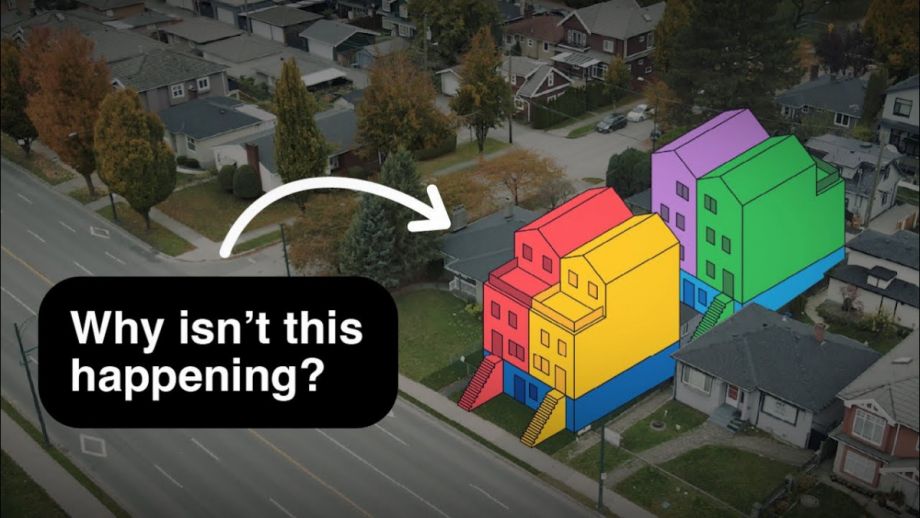
Since moving to Vancouver last year, I’ve become an avid viewer of local urbanism journalist Uytae Lee’s video series, About Here. In fact, I’ve become convinced he’s one of the greatest urbanist communicators out there, breaking down complex and non-sexy topics like the industrial land crisis, heritage conservation districts and effective bus signage into approachable, interesting and actionable videos that are still somehow nuanced and thoughtful.
In this video, part of a partnership with Small Housing, About Here breaks down the problem with most missing middle housing policy. More and more North American cities and states have scored victories to legalize and even incentivize middle housing – rowhomes, multiplexes, laneway houses and more – to densify single-family neighborhoods. But for all the fanfare, it turns out these moves haven’t resulted in many new developments.
“That doesn’t mean that missing middle housing is a lost cause,” he explains. “It’s just a matter of allowing these developments to be large enough to justify the price of land without burdening it down with too many other fees and requirements. If you get this formula right, you might end up with something like Auckland, New Zealand.”
Watch the video to learn more about how cities can adopt a proven and more effective model to help curb the housing crisis through missing middle housing.
Follow Lee and his videos on Twitter, YouTube, Instagram and TikTok.
This post was originally published on Next City.